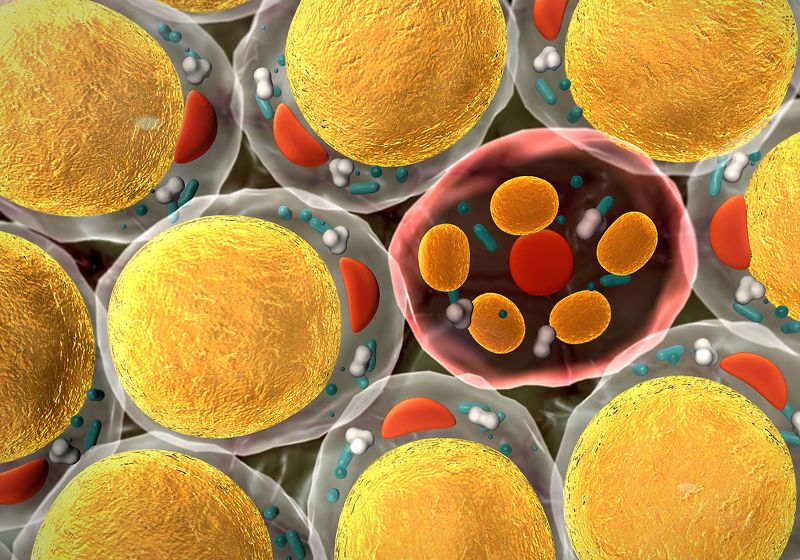Aggressive Breast Cancers Steal Energy from Nearby Fat Cells

Highly aggressive breast tumors burrow into nearby fat cells to steal energy.
Patients with triple-negative breast cancer (TNBC) have more aggressive, invasive tumors and fewer treatment options than other kinds of breast cancers. TNBC tumors use fatty acid oxidation as a key part of their metabolism.1 Coupled with studies that showed people with higher body mass indexes are more likely to develop TNBC, researchers suspected that adipose tissue influenced tumor growth.2 However, the mechanism underlying this relationship was unclear.
In a study published in Nature Communications, Andrei Gogaa cancer biologist at the University of California, San Francisco, and his team showed that TNBC cells form bridges to nearby fat cells and activate lipolysis in adipocytes to release fatty acids.3 The researchers showed that blocking this process halted tumor growth in mice. “This is a golden opportunity for us to develop effective strategies to treat the most aggressive forms of breast cancer,” Goga said in a press release.
Using TNBC tumors from patients, the team observed decreased lipid content and adipocyte size in cells nearest to the tumor. Compared to breast tissue from people without cancer, they observed an increase in gene expression related to lipolysis in breast tumors and surrounding tissues. The findings show that breast tumors promote the activation of nearby adipocytes and cause the depletion of these cells’ stored lipids.
Seeing these effects on adipocytes, the team investigated how tumors promote lipolysis in the fat cells. Since adipocytes form gap junctions between themselves, the researchers investigated whether tumors also used these cell contacts to activate nearby fat cells.4 They observed the presence of gap junctions in tumors by a fluorescent dye-transfer assay, increased tumor expression of gap junction-related proteins, and direct cell contact between ex vivo patient tumor cells or tumor cell lines and adipocytes by fluorescent microscopy.
To study the effects of these gap junctions on tumor growth, the researchers depleted a gap junction protein that was significantly increased in the tumors. They showed that the gap junctions transfer cAMP, a signaling molecule that promotes lipolysis, to adipocytes and that depleting a gap junction protein reduced this transfer.
Decreasing this gap junction protein also reduced tumor growth after transplantation into mice. When the team collected these tumors after a growth period in mice, they observed that tumors with the gap junction protein intact promoted lipolysis in the surrounding adipose tissue, while depleting this protein reduced lipolysis activation.
These results point to an important growth strategy for tumors, where connecting to nearby adipocytes through gap junctions and activating lipolysis in these cells provides necessary fatty acids for the tumors to proliferate. The study authors point out that separate research showed an important role of gap junctions in brain cancer, pointing to a shared mechanism of these proteins and their potential as therapeutic targets for many cancers.5




